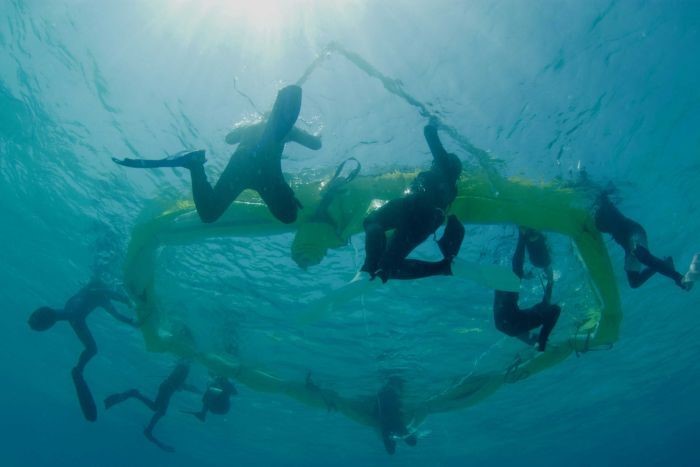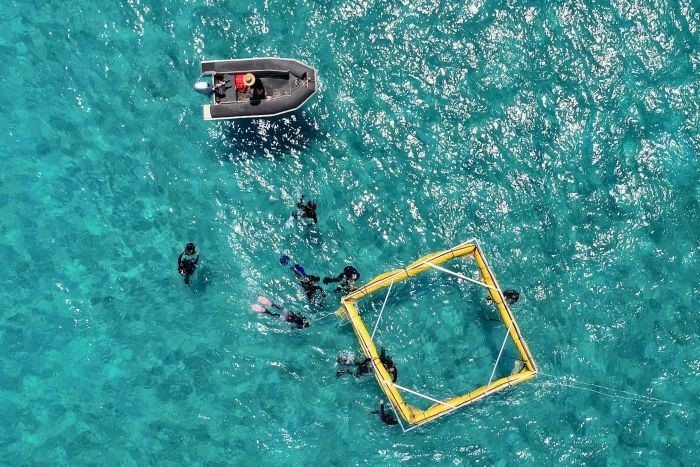 Researchers are using booms to collect millions of coral eggs and sperm during the annual coral spawning event on the reef. “For the first time we are going to try on a large scale to capture literally millions of eggs and sperm during the coral spawning event. We’re building spawn catchers floating off Moore Reef off Cairns.”
Researchers are using booms to collect millions of coral eggs and sperm during the annual coral spawning event on the reef. “For the first time we are going to try on a large scale to capture literally millions of eggs and sperm during the coral spawning event. We’re building spawn catchers floating off Moore Reef off Cairns.”
Scientists will grow the spawn in the floating booms for about a week and when the larvae were ready they would be introduced onto the most damaged parts of the reef. The idea is to repair the damage done by the mass bleaching in 2016 and 2017.
“This project is the first large-scale attempt to get millions of larvae back onto the reef system in an efficient way,” he said. “We then plan to scale it to hectare scales and within the next few years we’re aiming for square kilometre scale. “The scale of the damage on reefs worldwide is overwhelming, more than 70 per cent of the world’s coral reefs are already highly degraded, and another 10 or 20 per cent face imminent pressure from growing human populations.
This is an effort at “out of the box thinking” to try to combat a seemingly intractable issue. I don’t think we should place too much hope in it, but deal with the principal problem.
“We’ve lost so many corals that fewer corals are able to spawn and rates of fertilisation are going to be lower and the billions of larvae the reef needs to be replenished naturally [won’t be produced]. “The future is not looking good for any reef system around the world unless we can manage climate change.
The Bureau of Meteorology predicts a 70 per cent chance of an El Nino weather pattern forming this summer, which is associated with warmer, more extreme temperatures and fewer cyclones. “It’s really urgent we do this now — starting this year, because we face the potential for another massive El Nino developing and a consequence of that will be increased sea temperatures and a high likelihood of yet another major bleaching event,” Professor Harrison said.
 Great Barrier Reef Marine Park Authority chief scientist David Wachenfeld said, “The concern is as humans change, the climate the world is warming up, the reef is warming up — and that means conditions that lead to coral bleaching and coral mortality are happening more frequently and are more severe,” he said. “At the moment the reef is fighting for survival, it’s battered and bruised, but it’s resilient.
Great Barrier Reef Marine Park Authority chief scientist David Wachenfeld said, “The concern is as humans change, the climate the world is warming up, the reef is warming up — and that means conditions that lead to coral bleaching and coral mortality are happening more frequently and are more severe,” he said. “At the moment the reef is fighting for survival, it’s battered and bruised, but it’s resilient.
“But if we continue the way we are, the reef won’t be able to keep up and there won’t be anything we can do locally, so it’s absolutely vital we do everything we can do to reduce greenhouse gases. We need to tackle climate change locally but at the same time we’re working with scientists to develop techniques to help us in the future.”
